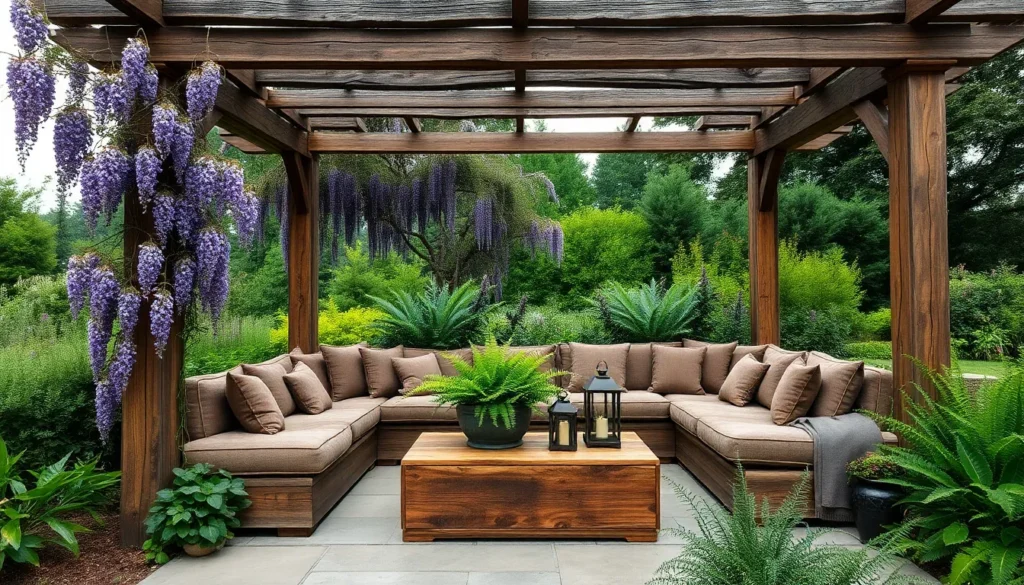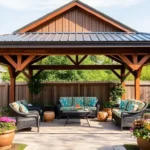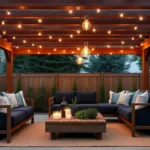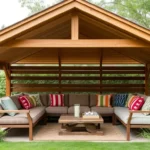Imagine stepping into your garden and being enveloped by the timeless charm of a rustic pergola, where the natural world seamlessly merges with thoughtful design. Whether you’re a novice dreaming of your first outdoor project or a seasoned homeowner seeking to enhance your garden’s allure, the rustic pergola offers a perfect blend of beauty and function. It’s more than just an architectural feature; it’s an invitation to create a serene retreat under the open sky.
In this article, you’ll discover how to select the ideal materials, integrate your pergola harmoniously into the landscape, and personalize it with elements that reflect your style. From choosing the perfect wood that ages gracefully to incorporating climbing plants that drape elegantly, you’ll gain insights that make the process both enjoyable and rewarding. Embrace the opportunity to transform your garden into a cozy, natural haven with the rustic elegance of a pergola.
Choosing Natural Wood Materials

When selecting natural wood materials for your rustic pergola, opt for durable and weather-resistant options like cedar, redwood, or teak. These woods not only offer a natural beauty that complements garden environments but also provide resistance to insects and decay. For a more sustainable choice, consider using reclaimed wood, which adds unique character and is an eco-friendly option.
To ensure longevity and structural integrity, it’s important to choose wood with the right dimensions and proper treatment. Use posts that are at least 4×4 inches for stability and ensure that beams and rafters are adequately sized to support your design.
- Seal the wood with an outdoor wood sealer
- Consider adding a natural oil finish to enhance its grain and color
These steps will protect the wood from moisture and UV damage, keeping your pergola looking its best for years to come.
Incorporating Climbing Plants Elegantly
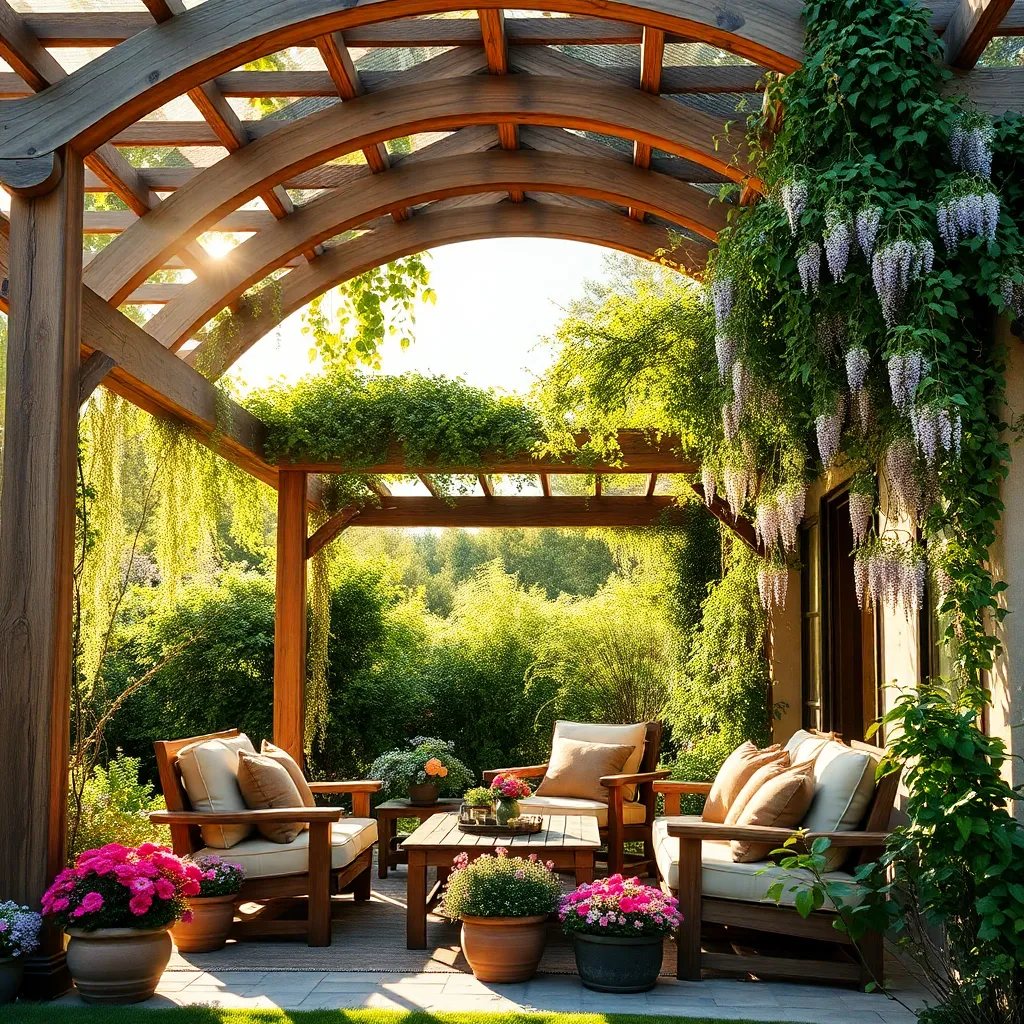
Incorporating climbing plants into your pergola design can create a stunning, natural canopy that blends seamlessly with your rustic garden. Start by selecting suitable plants like wisteria, clematis, or climbing roses, which are not only visually appealing but also thrive well on pergolas. Ensure your pergola is sturdy enough to support the weight of mature climbing plants; using hardwood like cedar or redwood is ideal due to their durability and aesthetic appeal. These materials provide a beautiful, natural look while offering resistance to the elements.
To elegantly train your chosen climbers, install a lattice or wire system on the pergola’s framework. This structure guides plant growth, ensuring even coverage and enhancing the overall rustic charm of your outdoor space. Beginners can start with simple wire grids, while more experienced gardeners might opt for intricate lattice patterns for a decorative touch. Regularly prune and tie the plants to the supports, encouraging healthy growth and preventing overgrowth that can damage the pergola. This careful attention to detail will result in a lush, living shelter that beautifully complements your garden’s natural aesthetics.
Designing Cozy Seating Areas
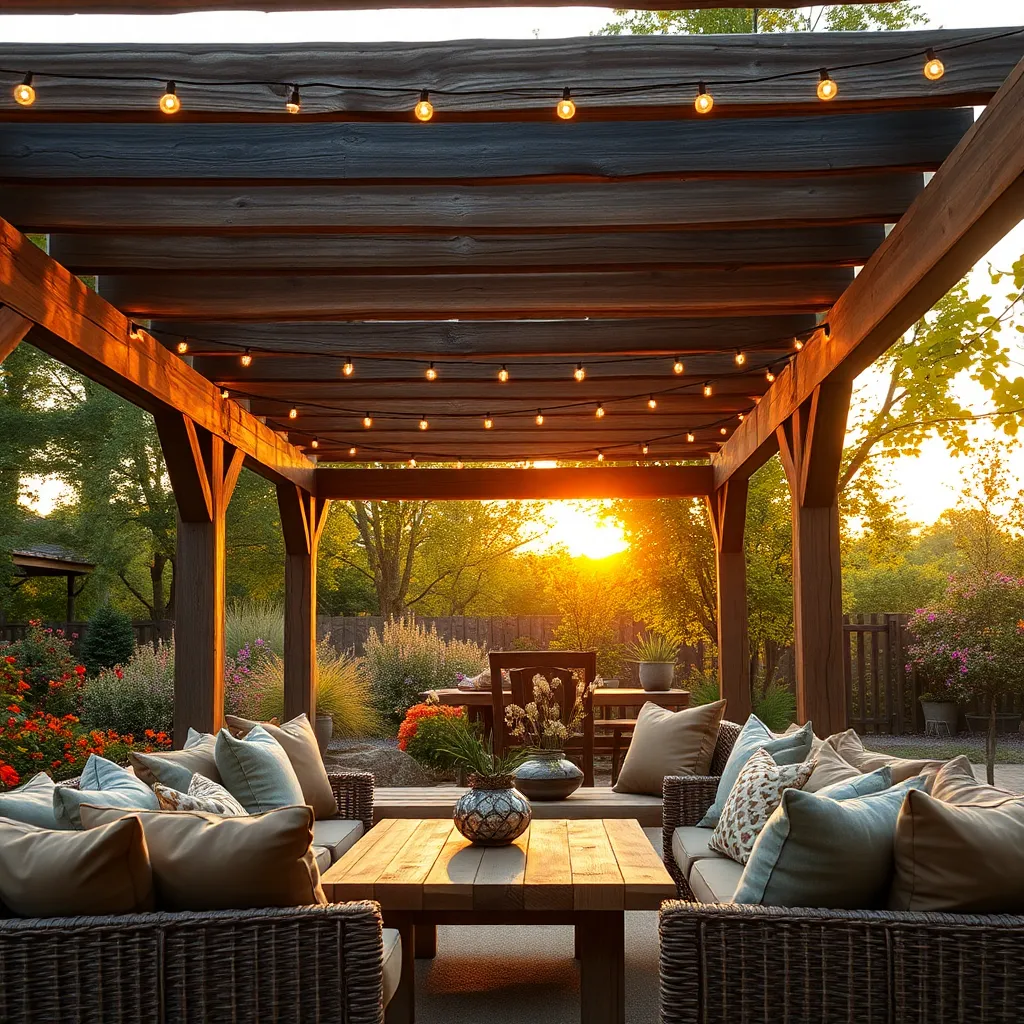
Creating a cozy seating area under your rustic pergola can transform your garden into a welcoming retreat. Start by selecting materials like weather-resistant woods such as cedar or teak for your furniture, which not only enhance the rustic appeal but also withstand the elements. For added comfort, incorporate cushions made from outdoor fabrics that resist fading and mildew, ensuring they remain vibrant and fresh season after season.
To elevate the cozy factor, consider adding a few design elements that merge comfort with style. Position your seating to take advantage of natural views, and use layered lighting with lanterns or string lights for a warm ambiance during evening gatherings. For advanced gardeners, integrating built-in seating with storage options underneath can maximize space and keep your area tidy. Ensure your layout leaves room for movement, ideally providing at least four feet of clearance around each seating cluster to maintain an open and inviting atmosphere.
Maximizing Sunlight and Shade
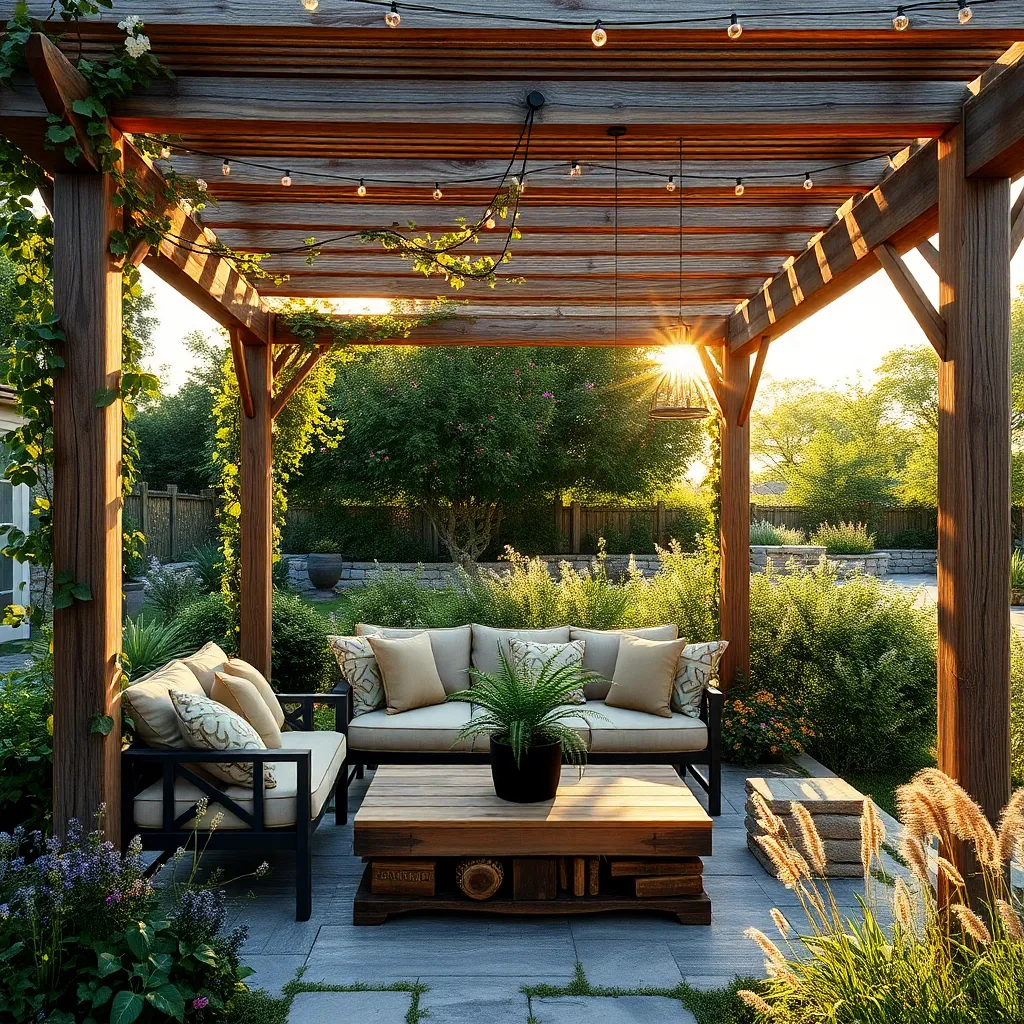
When designing a rustic pergola for your natural garden, strategically positioning the structure is essential to maximize sunlight and shade throughout the day. For optimal results, align the pergola parallel to the path of the sun, typically running east to west, to enjoy a balance of both sun and shade. Use natural materials like weathered wood or bamboo to blend seamlessly into the garden, and consider latticework or climbing plants like wisteria or grapevines to provide dappled shade and enhance the rustic aesthetic.
To further enhance your pergola’s functionality, consider incorporating adjustable shade panels or retractable canopies for additional control over sunlight exposure. Advanced gardeners might explore installing solar-powered lights or fans to extend the use of the space into the evening or during warmer months. For a more robust structure, use durable wood such as cedar or redwood, which naturally resists decay and pests, ensuring longevity and minimal maintenance. These thoughtful design choices will create a welcoming and versatile outdoor retreat that can be enjoyed throughout the seasons.
Enhancing Garden Ambiance Naturally

To naturally enhance your garden’s ambiance with a rustic pergola, consider incorporating materials like weathered wood or reclaimed timber. These materials not only blend seamlessly with natural surroundings but also add a touch of authenticity to the design. Opt for untreated wood to let the elements create a natural patina over time, giving your pergola a timeless appeal. For beginners, starting with a simple design is key; aim for a structure with four sturdy posts and a basic slatted roof.
Advanced gardeners might explore adding climbing plants such as wisteria or jasmine, which can weave through the pergola’s beams, providing both shade and fragrance. Ensure your pergola is at least 8 feet tall to accommodate plant growth and create a spacious feel. Incorporate natural elements like stone pavers or gravel paths to lead towards the pergola, inviting guests to relax beneath its canopy. For a touch of elegance, hang solar-powered lanterns from the beams to illuminate the space at night, enhancing both safety and charm.
Conclusion: Creating Beautiful Outdoor Spaces
In exploring the enchanting world of rustic pergola designs for natural gardens, we uncovered five vital relationship concepts: the harmony of blending elements, the strength found in supportive structures, the beauty of shared growth, the importance of creating intimate spaces, and the enduring power of natural connections. Each concept not only enhances your garden but also enriches your relationship, fostering an environment where love and understanding can flourish.
As a next step, why not sit down with your partner and envision your dream pergola together? This collaborative project can spark meaningful conversations and deepen your bond. As you embark on this journey, remember that the foundation of any relationship, like a pergola, is built on mutual support and shared dreams.
To ensure these insights remain at your fingertips, bookmark this article now. It can serve as your guide and inspiration, reminding you of the beauty you can cultivate both in your garden and your relationship.
Looking ahead, embrace the idea that your relationship, much like a well-designed pergola, has the potential to grow stronger and more beautiful with time and care. Together, you can create a haven of love and tranquility, where both your garden and relationship thrive.

